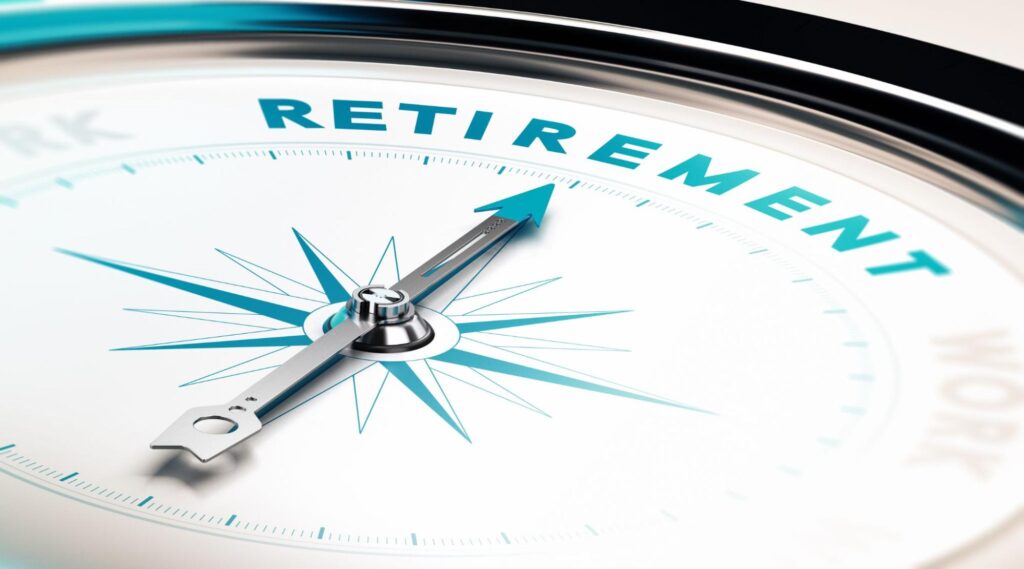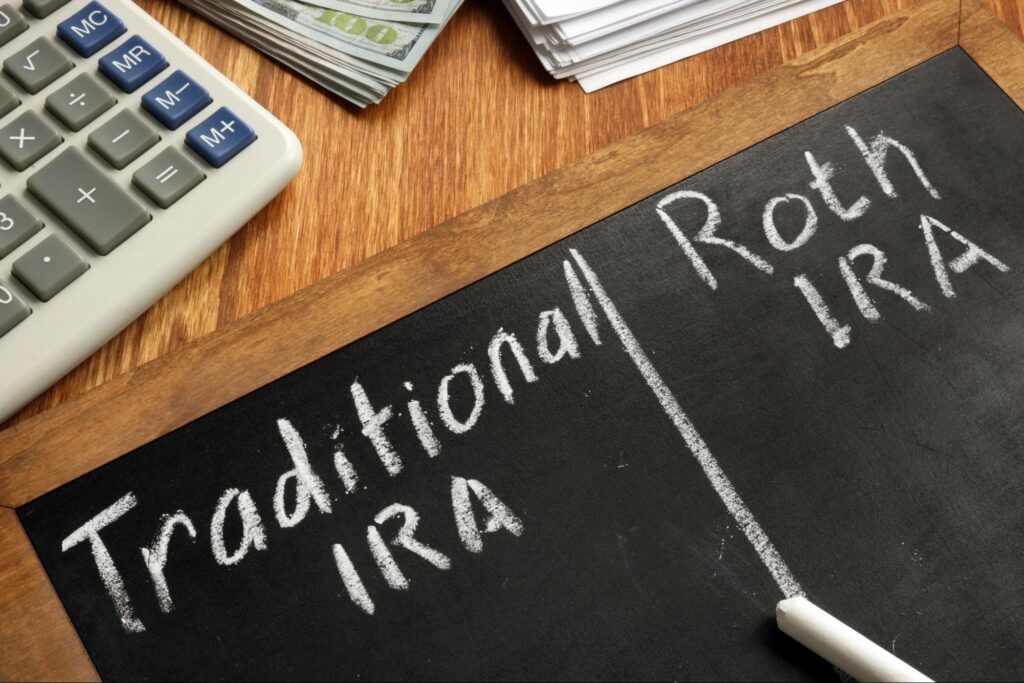
When searching for answers about which are the best investments for retirement savings, some information you find will dive right into a few gimmicky recommendations or point you immediately to a financial advisor.
And while financial advisors can be skilled in helping retirees or those simply getting an early start building that nest egg, commissions are often connected to the products they educate you about. This, of course, can interfere with their ability to be objective and independent.
We’re taking a very different approach here. Why? Because the best retirement investments for you may be very different than for someone behind you in line at the grocery store who is quite happy being self-employed during retirement to bring in extra income.
For some, retirement means enjoying the good life and experiencing everything you were too busy to do while you were working. For others, retirement is all about security and making sure the money doesn’t run out. So savings plans and investment choices in these two situations will be different.
In this article, we’re going to establish some perspective about retirement planning, and then we’ll dive into some options to consider when choosing the best investments for your particular retirement portfolio.
A Time to Save and a Time to Spend
Imagine you’re driving up a mountain. Eventually you’ll reach the midpoint, or the peak, and begin your descent on the other side.
This mountain is a perfect metaphor for establishing perspective when it comes to planning for retirement. The time spent traveling upward toward the peak is the first half of your life. For some people that ascent might take longer and for some that ascent may not be long at all.
But for the majority of us, especially those expert savers, retirement is something we can safely say will happen a bit after midlife.
During that ascent, you’re working. Hopefully you’re saving and investing some of your income for retirement. That’s your job on the trip up.
Once you hit retirement, it’s time to make a turn and consider how you’ll live the rest of your life on any retirement income from your employer or from your investments.
Make sense?
Thinking about both sides of the mountain will help establish the right thought process about which investments you should choose.
Understanding How Retirement Considerations Have Changed

Retirement age according to social security in 2021 is 67. But retiring early seems to be something everyone is striving for. In fact, there is even a name for this goal: FIRE (financial independence retire early).
So, is it possible?
People in the workforce today are facing challenges that previous generations could never have imagined.
Life expectancy is longer. For you, that means more health care considerations and the fact that your money will need to last longer.
Interest rates are much lower. For you, that means that fixed income instruments that were once very reliable, predictable, and profitable are no longer earning high enough returns for many people.
It’s becoming less likely that your employer offers pension plans. The defined benefits of a pension and the guarantee of a certain amount of money in retirement has all but disappeared. 401(k) plans, also known as defined contribution plans, have become the norm and involve much more risk and stock market volatility. These plans no longer guarantee a certain payout, only your ability to save money under more favorable tax rules.
The Best Investments for Retirement
So, how can you retire the way you want to? Which investment options are the right ones?
It all starts with aligning your retirement goals with your savings, asset allocation, and investing strategies so you can choose the best investments for retirement and for your future.
The most important advice about designing the right retirement plan comes in just two words: Start now.
Why? Because when you start saving, compounding happens, which boosts your savings even more the more time it has to work. And because fiscal responsibility is like a muscle. When you use it — you save and you invest — that muscle becomes stronger. You create a habit.
So, let’s dig into some of the best retirement investments out there today.
Retirement Income Funds
Retirement income funds are mutual funds with managers that allocate your investment in a diversified array of stocks and bonds with the ultimate goal to have that money produce income for you in retirement.
For example, let’s say you invest $10,000 into a fund with a target payout of 4% per year. If that money appreciates to $50,000 after 30 years, you’ll receive $2,000 per year (.04 times $50,000), or $166.67 per month in retirement.
And, like mutual funds, retirement income funds are set up so you can access your money at any time.
Immediate Annuities
Immediate annuities are actually insurance, but they function like an investment. These annuities provide guaranteed income immediately and in a steady stream.
For example, with a 10-year term-certain annuity, you can purchase a stream of income for 10 years.
Folks who are already retired might be interested to know that immediate annuities begin paying out right away.
What’s the catch?
Well, these annuities tie up your assets, and there is the possibility of losing your investment if your annuity outlives you.
Traditional IRA and Roth IRA

IRA stands for individual retirement account. The two most common types are the traditional IRA and the Roth IRA.
In the traditional IRA, your contributions to the retirement account are tax deductible up to a certain contribution limit.
So, if you contribute $5,000 to your traditional IRA, your income from that year decreases by $5,000. However, when you retire and withdraw those funds, the IRS will tax that withdrawal at the ordinary income tax rate. So essentially, a traditional IRA contribution is set up to be tax-deferred.
Tax-deferred and tax-free are two very different things, and that’s where the Roth IRA comes in.
Your initial contribution will not be tax deductible. But the benefit of a Roth IRA is that this retirement account provides tax-free growth and tax-free withdrawals upon reaching retirement.
As long as you’ve had the account for five years, once you reach 59 years of age, you are clear to start making withdrawals without any federal tax implications.
Dividend Stocks and Dividend Income Funds
Dividend stocks are a popular way to invest, save, and supplement social security in retirement.
Many investors buy and hold dividend stocks for the long term and then use the dividend payouts in retirement as a source of income.
While not exactly free money, dividend stocks pay you without you having to do anything, so this kind of income is classified as passive income. You can earn those dividends by investing in a retirement account or in a regular brokerage account.
Or you can choose a dividend income fund. In this type of fund, a manager oversees a collection of dividend-paying stocks.
Bonds and Bond Funds
With individual bonds, essentially you are lending an institution money for a predetermined amount of time, and they are paying you a predetermined yield, or amount of interest, for it. When the bond matures, the issuer gives your initial investment back.
High-yield bonds pay more, but typically have lower quality ratings. And the opposite is true. Low-yield bonds will have higher quality ratings since they are less risky. Which one is right for you? Well, it all depends on your risk tolerance and how much time you have between now and retirement.
You’ll hear the term bond ladder, which is a strategy to invest in bonds with maturity dates that align with your cash flow needs.
Because this can become complicated, bonds can be bundled into funds by type. You’ll find categories including corporate, government, and municipal bond funds.
With bond funds, all of that planning and strategy goes on behind the scenes. Less work for you, but it’s the same concept.
Real Estate and REITs
Purchasing a rental property can provide you with a stable source of income for retirement.
But make no mistake, investing in real estate in this way is not for those looking for easy free money. This is a time-consuming business for those with real estate experience.
If you want to skip the management and maintenance headaches of renting properties to tenants but still like the idea of real estate investing, consider adding a real estate investment trust (REIT) to your investment portfolio.
Real estate investment trusts are companies that own, finance, and manage real estate property.
This is the much easier way for new real estate investors to get started in this sector. Plus, REITs pay dividends that are typically higher than what you’ll see with dividend stocks.
You can invest in a REIT through standalone stocks, mutual funds, and exchange-traded funds (ETFs).
There Is No Time Like the Present to Get Started

Now you know that the best retirement investments and plans are the ones that help you reach the goals that are unique to you. You also have a better idea of the types of investment options you might want to consider.
You may be ready to add dividend stocks to the mix but aren’t sure how to take that first step.
We can help you build a portfolio of the best investments for retirement by sharing which dividend stocks can generate cash flow for you now and well into the future. Learn about these stocks today by subscribing to Investors Alley’s “Dividend Hunter” newsletter.





